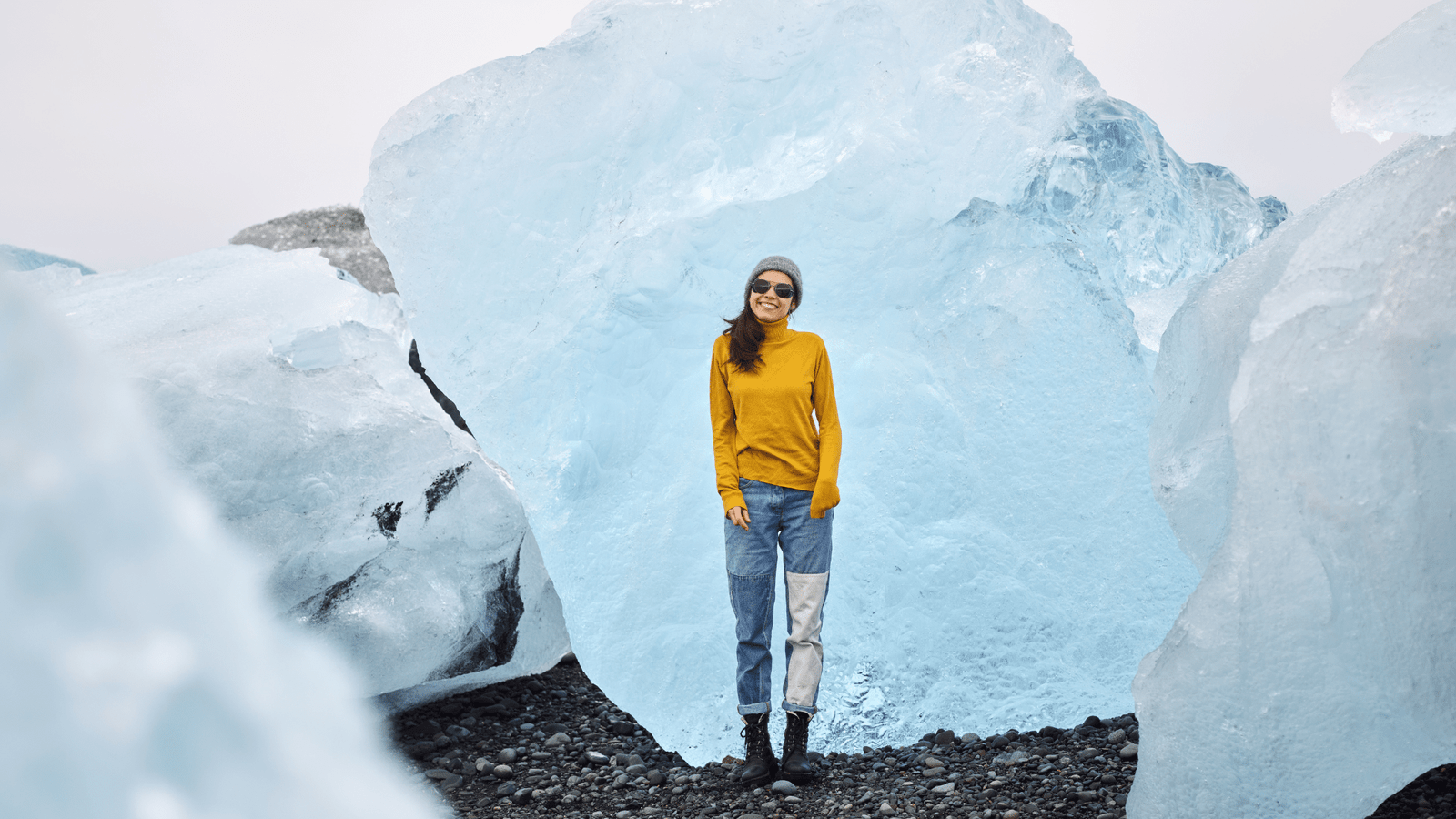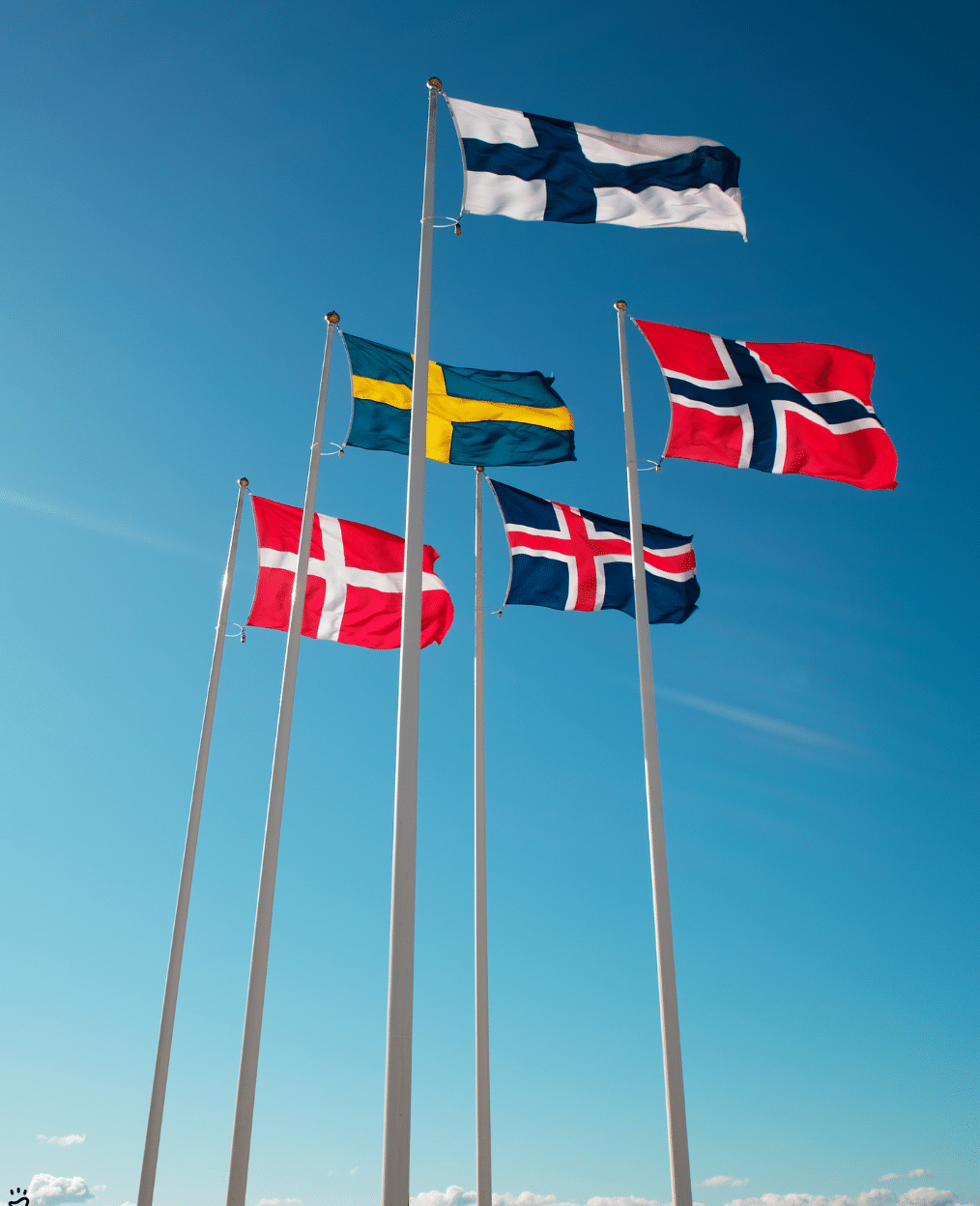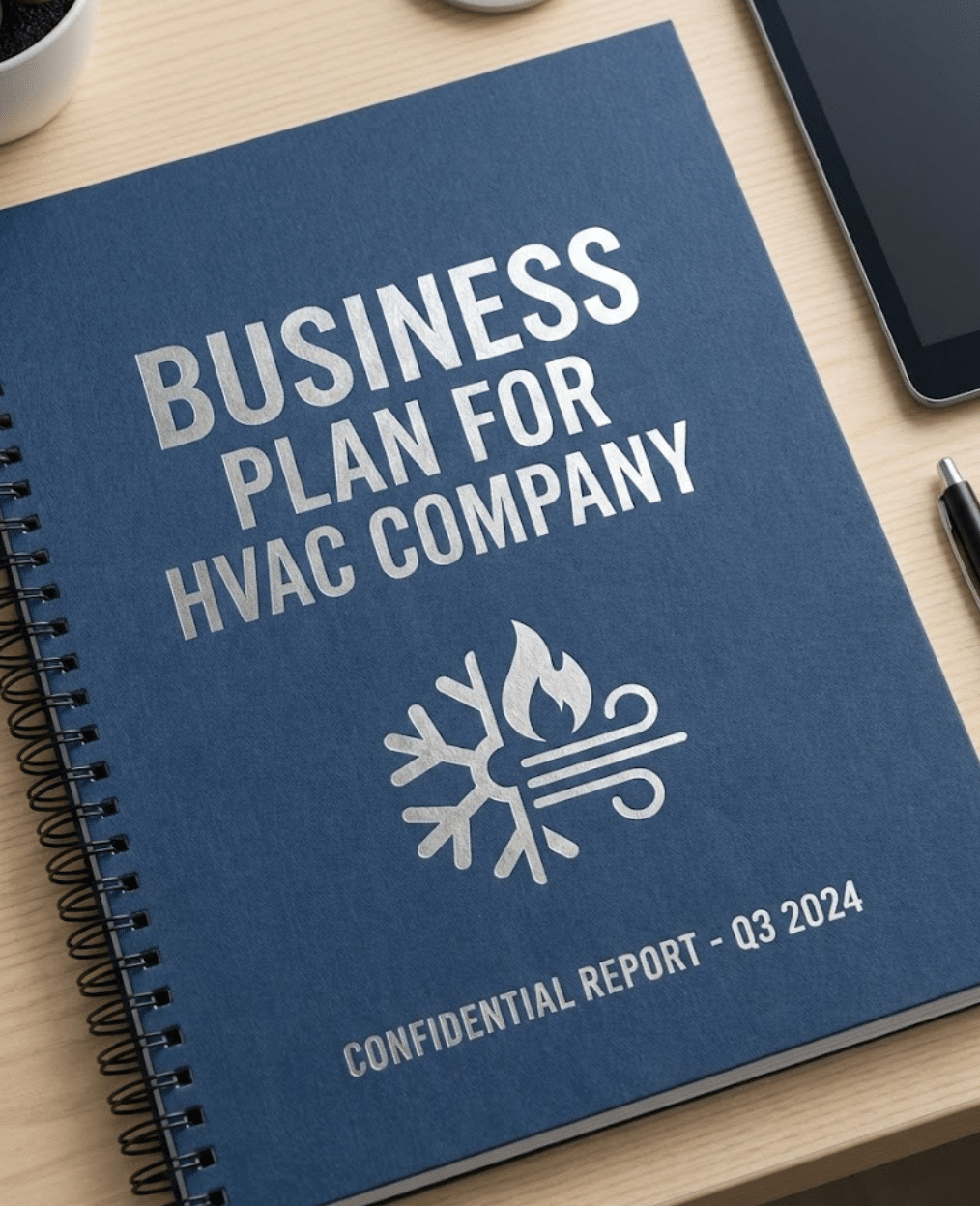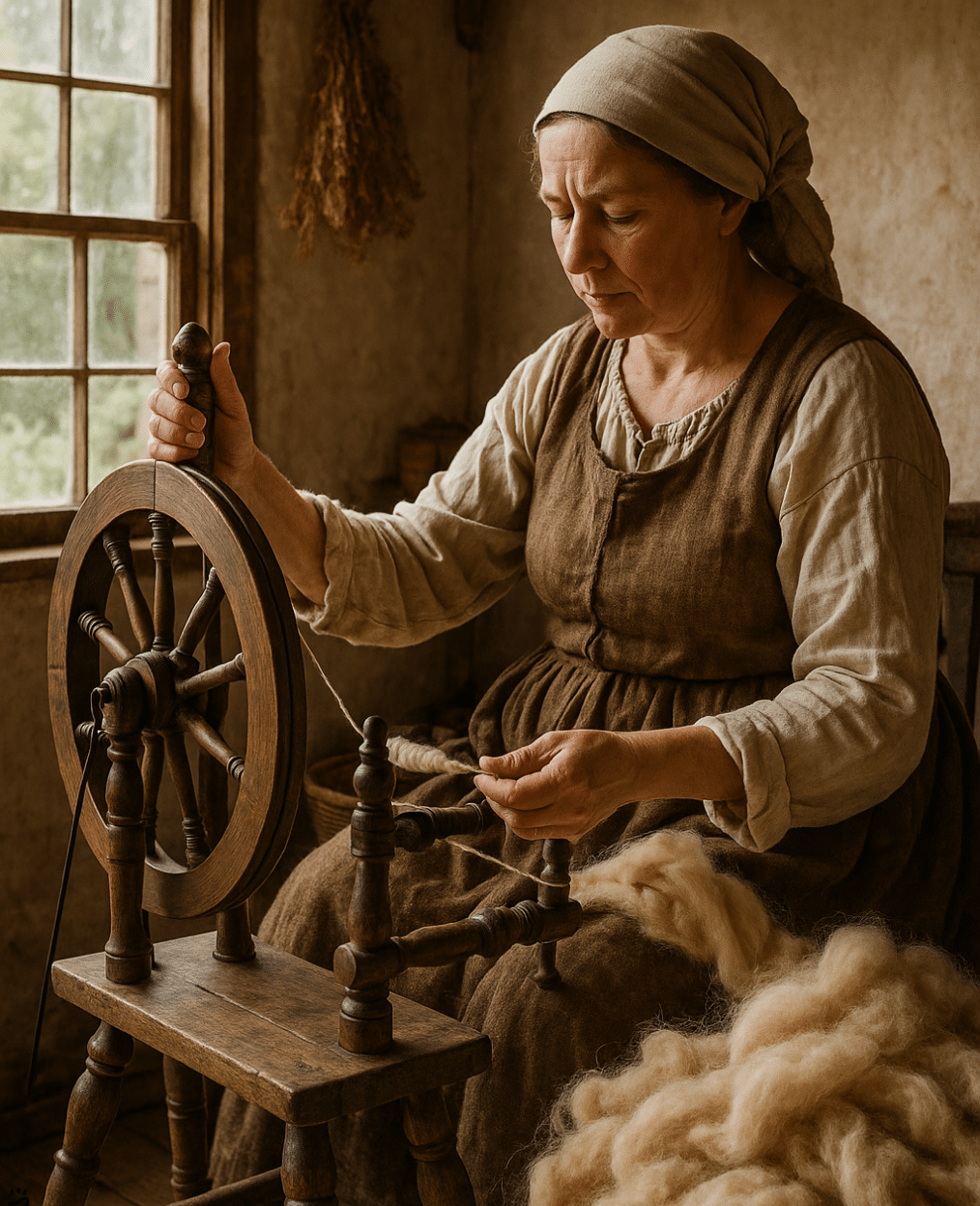Over my 10 years analyzing retail markets, I’ve rarely encountered a region as distinctive and promising as the Nordic fashion industry. As the lead market analyst at Globemonitor, I’m particularly excited to share our latest market insights on this dynamic industry, which has captured global attention for its unique blend of sustainability, innovation, and commercial success.
The Nordic fashion industry is more than just stylish clothes—it reflects the region’s values, priorities, and creativity. From Sweden’s bustling e-commerce scene to Iceland’s growing market, the industry is dynamic and full of opportunity.
What makes the Nordic fashion scene so exciting is its balance between tradition and innovation. On one hand, you have a deep respect for nature, seen in their commitment to eco-friendly materials and ethical practices.
On the other hand, the region embraces cutting-edge technology, from advanced textile production to thriving e-commerce platforms. This combination makes the industry both forward-thinking and rooted in meaningful values.
For entrepreneurs, this is a space that rewards creativity, authenticity, and a strong understanding of local consumer behavior. People in the Nordic countries don’t just buy fashion—they connect with it. Whether it’s a perfectly tailored coat made from sustainable wool or a pair of sneakers designed for function and style, every purchase tells a story. As someone looking to enter this market, understanding these stories and values is essential.
Overview of the Nordic Fashion Industry

Historical Evolution and Cultural Influences in Nordic Fashion
Nordic fashion has always been a reflection of its environment—practical, functional, and deeply connected to nature. Historically, clothing in the region was designed to withstand harsh climates while maintaining a clean, understated aesthetic.
This is where the hallmark of “Scandinavian minimalism” began. The Vikings, for instance, valued durability and functionality, which influenced the traditional wool and linen garments of the time. Centuries later, as industrialization took hold, Nordic countries began to adapt global fashion trends while keeping their unique identity intact.
One cultural influence that still resonates today is the deep respect for nature. This connection is evident in how sustainability became more than a trend—it’s a way of life. The rise of brands like Filippa K and Nudie Jeans, which focus on circular fashion and eco-friendly materials, reflects this mindset. Traditional crafts, such as knitting and weaving, have also played a significant role in shaping the modern Nordic fashion aesthetic. Even today, you’ll find these influences in contemporary designs, blending heritage with innovation.
Economic Contribution of the Fashion Industry to Nordic Economies
The fashion industry is a vital pillar of the Nordic economies, not just in terms of revenue but also employment and innovation. In recent decades, it has evolved from a local necessity to a global export powerhouse. Iconic brands like H&M, Acne Studios, and Marimekko have positioned the Nordics as leaders in affordable, sustainable, and stylish fashion, contributing billions to their respective GDPs.
In Sweden, for example, fashion has become one of the top-performing industries, with exports reaching consumers worldwide. Similarly, Denmark’s capital, Copenhagen, has gained international recognition for hosting one of the most eco-conscious fashion weeks in the world. These events not only drive economic activity but also cement the region’s reputation as a hub for innovation and creativity.
What’s remarkable is how the fashion industry collaborates across sectors. Governments, private companies, and local designers often work together to prioritize sustainable production, reduce waste, and innovate new materials. These efforts not only contribute economically but also set a global standard for ethical fashion practices.
Major Players and Brands That Define the Landscape
Some of the most recognizable names in the global market are found in the Nordic fashion industry. Leading the pack is H&M, headquartered in Sweden, which has redefined fast fashion with its global reach and recent efforts in sustainability. Another standout is Acne Studios, known for its avant-garde designs and premium quality, representing the intersection of art and fashion.
Denmark boasts powerhouse brands like Ganni, which has become synonymous with “Scandi-chic” and targets a younger, trend-conscious audience. Meanwhile, Finland’s Marimekko is celebrated for its bold prints and timeless designs, creating a unique space in both fashion and home decor.
Beyond these household names, emerging brands are also making significant waves. Labels like Eytys, with their unisex designs and Norwegian Rain, which blends functionality with high-end aesthetics, are gaining international acclaim. These players, big and small, collectively shape the Nordic fashion landscape, driving trends and setting new benchmarks for the global industry.
The Nordic fashion industry’s success isn’t just about the clothes—it’s about values, collaboration, and innovation. It’s a region that doesn’t just follow trends; it creates them.
Market Growth Factors

Sustainability as a Core Value
One of the biggest growth drivers in the Nordic fashion market is its commitment to sustainability. In this region, sustainability isn’t just a marketing buzzword—it’s a deeply ingrained cultural value. Consumers demand transparency in how products are made, from sourcing materials to ethical labor practices. This has driven brands to innovate, creating circular business models and eco-friendly materials that resonate with conscious shoppers.
For example, companies like Filippa K and Nudie Jeans have embraced sustainable practices by offering repair programs, rental options, and recycling initiatives. These efforts not only attract loyal customers but also encourage repeat business and long-term brand advocacy. Entrepreneurs who integrate sustainability into their business models will find this market more receptive to their products.
Growth of E-Commerce Platforms
The Nordics are among the most digitally connected regions in the world, and this has fueled the rapid expansion of fashion e-commerce. Fashion is one of the most purchased product categories online, and in 2023, the Nordic online fashion market was valued at $9.5 billion. With consumers increasingly shopping from their phones and laptops, having a robust online presence is critical for any brand looking to compete in this space.
What’s driving this digital trend? Convenience, high internet penetration rates, and tech-savvy consumers. Platforms that offer seamless shopping experiences—like personalized recommendations, fast checkout, and flexible delivery options—are thriving. For startups, leveraging digital tools like AI-driven personalization and augmented reality for virtual try-ons can help capture this audience’s attention.
Minimalist and Functional Design Appeal
Nordic consumers value minimalist, functional designs that prioritize quality over quantity. This aesthetic has influenced global fashion trends, with Scandinavian fashion becoming synonymous with effortless elegance. For local brands, this focus on timeless design means consumers are willing to invest in higher-priced items that offer durability and versatility.
Entrepreneurs can benefit from this trend by prioritizing simple, well-crafted designs that emphasize practicality. For example, a startup that creates multipurpose outerwear suitable for both city life and outdoor adventures would resonate well with Nordic shoppers.
Supportive Government Policies and Initiatives
Governments in the Nordic countries actively support innovation and sustainability in the fashion industry. From grants and tax incentives for green businesses to research funding for new materials, there’s a wealth of resources available to entrepreneurs. Denmark, for instance, offers funding programs specifically for startups working on sustainable innovations, while Sweden promotes fashion as a key export sector.
This supportive environment lowers barriers for new entrants and encourages innovation. Startups that align their business with these governmental goals—whether through sustainable practices or technology adoption—are well-positioned to succeed.
Influence of International Collaborations and Events
Copenhagen Fashion Week has emerged as one of the most influential fashion events globally, showcasing the region’s commitment to sustainability and innovation. Events like these not only boost the visibility of Nordic brands but also attract international collaborations that drive growth.
Global partnerships with designers, brands, and technology companies help Nordic fashion gain access to new markets while staying competitive at home. Startups can benefit by participating in these events to build networks, gain exposure, and learn from industry leaders.
Evolving Consumer Preferences
Nordic consumers are known for their discerning taste and willingness to invest in brands that align with their values. The shift toward slow fashion—where quality, longevity, and ethical practices take precedence—is driving demand for thoughtful designs and sustainable materials.
Additionally, there’s growing interest in customizable and bespoke products. Entrepreneurs who can offer tailored solutions, such as made-to-order clothing or unique design features, are likely to stand out in this market.
The growth of the Nordic fashion industry is fueled by sustainability, digital innovation, and evolving consumer demands. Entrepreneurs who embrace these trends—whether through eco-conscious practices, tech-enabled solutions, or timeless designs—have a significant opportunity to thrive. The market rewards creativity, authenticity, and businesses that reflect the region’s values. By aligning with these growth factors, you can position your fashion brand for long-term success in the Nordics.
Nordic Fashion Industry Trends

Sustainability Leading the Way
Sustainability isn’t just a trend in the Nordic fashion industry; it’s a foundational pillar. From the use of organic and recycled materials to innovative approaches like circular fashion, the region has become a global leader in eco-friendly practices. Brands such as Filippa K and Ganni have set benchmarks by implementing take-back programs, garment recycling, and even rental options for their collections. Consumers in the Nordic countries demand transparency, pushing companies to adopt practices like publishing sustainability reports and ensuring ethical supply chains.
For startups, this focus on sustainability presents a clear opportunity. Aligning with these values is not just a desirable feature, but a crucial aspect of business operations. Whether it’s sourcing biodegradable fabrics or using renewable energy in production, brands that prioritize sustainability are more likely to resonate with Nordic shoppers.
The Rise of Digital and E-Commerce
The Nordic region is one of the most digitally connected in the world, and this has revolutionized how people shop for fashion. E-commerce is experiencing significant growth, with Sweden and Norway leading the way in terms of market size. Beyond basic online stores, digital innovation has taken hold, from virtual try-ons using augmented reality to AI-driven personalized shopping experiences. Consumers here expect seamless, efficient digital interactions, and brands that deliver on this expectation stand out.
Social commerce is also gaining traction, with platforms like Instagram and TikTok becoming key channels for fashion discovery and purchase. This trend gives entrepreneurs a direct way to connect with audiences and build authentic relationships with their customer base. Investing in digital tools and platforms is no longer optional—it’s critical for success in the Nordic fashion industry.
Minimalist and Functional Design
Scandinavian minimalism continues to shape both local and global fashion trends. The emphasis on clean lines, neutral palettes, and multifunctional pieces resonates strongly with consumers who prioritize quality and practicality. This aesthetic isn’t just about looking good—it’s about feeling good in designs that are timeless and versatile.
For entrepreneurs, this means focusing on creating pieces that can seamlessly transition between different settings—work, casual outings, or even outdoor adventures. Offering well-crafted, durable items that fit this minimalist ethos is a winning formula in this market.
Growth of Circular Fashion
Circular fashion is more than a buzzword in the Nordic countries; it’s becoming the norm. This approach emphasizes extending the lifecycle of products through repair, resale, recycling, and renting. Established brands and startups alike are exploring ways to minimize waste and keep garments in circulation for as long as possible. Companies like Nudie Jeans offer free repairs on their products, while emerging platforms facilitate second-hand sales and clothing swaps.
For new entrants, circular fashion offers a chance to stand out. Whether it’s designing garments that are easy to disassemble for recycling or setting up systems for garment repair, businesses that embrace circularity are tapping into a powerful consumer demand.
Inclusivity and Diversity
While traditionally associated with a minimalist aesthetic, Nordic fashion is increasingly embracing inclusivity and diversity. From offering extended size ranges to designing gender-neutral collections, brands are shifting to meet the needs of a broader audience. This trend is particularly noticeable among younger consumers, who value representation and individuality.
Startups that prioritize inclusivity—whether through marketing campaigns, product designs, or brand messaging—can connect deeply with these values. It’s not just about creating products for everyone; it’s about making everyone feel seen and valued.
Technology in Fashion
Tech integration is transforming the Nordic fashion industry. From using blockchain for supply chain transparency to developing smart textiles that adapt to temperature changes, the region is at the forefront of fashion innovation. Brands are also experimenting with virtual fashion, creating digital clothing for avatars in the metaverse.
Entrepreneurs should monitor these technological advancements closely. Whether it’s enhancing the customer experience through AI or adopting sustainable manufacturing technologies, staying ahead in tech can provide a significant competitive advantage.
The Nordic fashion industry is driven by sustainability, digital innovation, and timeless design. Entrepreneurs entering this market should focus on aligning with these trends to create a brand that resonates with the values of Nordic consumers. By embracing circular fashion, leveraging technology, and prioritizing inclusivity, businesses can position themselves for long-term success in this ever-evolving industry.
Market Size and Potential Growth
The Nordic fashion industry as a whole presents a vibrant and growing market, with a blend of established players and emerging opportunities for innovative startups. In 2024, revenue for the apparel market across the Nordic region reached $27.28 billion, according to Statista.
Thie Apparel is expected to grow annually at a rate of 2.15% (CAGR 2024-2029), driven by strong consumer interest in sustainability, e-commerce, and high-quality designs. Women’s apparel leads the sector, with an estimated market volume of $14.27 billion in 2024.

While the region is united by shared values like sustainability and functionality, each country offers distinct opportunities and challenges for fashion entrepreneurs. Let’s explore the market size and growth potential of each Nordic country.
Sweden: The Largest Nordic Fashion Market
Sweden stands out as the powerhouse of the Nordic fashion industry, offering a dynamic mix of established brands, a thriving e-commerce sector, and a consumer base deeply invested in sustainability and quality. With a projected revenue of $8.81 billion in 2024 and a steady growth rate of 2.03% (CAGR 2024-2029), the Swedish apparel market is a lucrative space for both established businesses and startups.

E-Commerce and Digital Savvy Consumers
Sweden’s e-commerce fashion market is valued at $4.2 billion, making it the largest online fashion market in the Nordic region. This growth is fueled by a tech-savvy population with high internet penetration rates and a preference for online shopping. Swedish consumers expect seamless digital experiences, including fast-loading websites, mobile-friendly platforms, and personalized recommendations.
Social commerce is also a growing trend, with platforms like Instagram and TikTok playing a significant role in how Swedish consumers discover and purchase fashion. Brands that leverage these platforms effectively, using engaging content and influencer partnerships, can quickly build a strong online presence.
Sustainability at the Core
Sustainability is a cornerstone of Swedish fashion. Consumers here demand transparency and eco-friendly practices from brands, pushing companies to adopt circular business models, ethical sourcing, and low-impact production methods. Brands like Nudie Jeans, which offer free repairs and promote recycling, have set a high standard for sustainability in the industry.
Entrepreneurs entering this market should focus on integrating sustainable practices into every aspect of their business. From using organic or recycled materials to implementing take-back programs, aligning with Swedish values is key to gaining consumer trust. Startups that can communicate their sustainability efforts authentically will stand out in this competitive landscape.
Supportive Ecosystem for Startups
Sweden’s government actively supports innovation and sustainability, creating a favorable environment for fashion startups. Grants, tax incentives, and funding programs for green businesses are readily available. For example, Vinnova, Sweden’s innovation agency, provides funding for projects that promote sustainable growth, including those in the fashion industry.
Collaborations between industry leaders, startups, and research institutions are also common, driving advancements in textile technology and sustainable practices. Entrepreneurs can benefit by joining these networks, gaining access to resources, and staying ahead of market trends.
International Influence and Export Potential
Sweden’s fashion brands are not just leaders within the Nordics—they have a significant global footprint. Iconic names such as H&M and Acne Studios have raised the standard for Swedish fashion by combining affordability and avant-garde design to successfully penetrate international markets.
For startups, this means two things: the opportunity to learn from established brands and the potential to use Sweden as a launchpad for global expansion. With a strong reputation for sustainability and innovation, Swedish fashion brands are well-positioned to attract international attention.
Sweden offers an exciting mix of opportunities for entrepreneurs in the fashion industry. With its large market size, strong e-commerce presence, and focus on sustainability, it’s a region where innovation and authenticity thrive. Entrepreneurs who align their brands with Swedish values—minimalism, functionality, and eco-consciousness—can carve out a successful niche. By embracing digital tools and leveraging government support, startups can navigate the challenges and tap into the immense potential Sweden’s fashion industry has to offer.
Norway: A Market of Quality and Affluence
Norway presents a unique opportunity within the Nordic fashion industry. Known for its high purchasing power and preference for premium, functional fashion, the Norwegian market is projected to generate $7.69 billion in revenue in 2024. With an annual growth rate of 2.45% (CAGR 2024-2029), it is one of the faster-growing markets in the region, driven by its affluent consumers and focus on sustainable, high-quality products.

Luxury and Premium Segments
Norwegian consumers have a high disposable income, making them more likely to invest in premium and luxury fashion. This segment of the market is particularly robust, with demand for high-quality fabrics, impeccable craftsmanship, and exclusive designs. Entrepreneurs with a focus on high-end fashion or bespoke offerings can tap into this lucrative segment.
Additionally, brands that can combine luxury with sustainability stand to gain even more traction. Norwegian consumers are increasingly drawn to products that marry ethical practices with elevated design.
The Growing Role of E-Commerce
In Norway, the e-commerce fashion market was valued at $3.6 billion in 2023, reflecting the country’s widespread internet use and digital literacy. Norwegian consumers are highly accustomed to online shopping, favoring platforms that offer convenience, fast delivery, and easy returns.
Social commerce is another emerging trend, with younger consumers turning to Instagram and TikTok for fashion inspiration and purchases. For entrepreneurs, building a strong online presence with engaging visuals and storytelling can be a powerful way to connect with this audience.
Sustainability as a Market Driver
Norway is a leader in environmental consciousness, and this extends to its fashion industry. The country’s commitment to sustainability is reflected in the government’s strict environmental policies and the consumer demand for eco-friendly products. Norwegian Rain, for instance, has built its reputation on creating stylish yet functional outerwear with sustainable materials, earning global acclaim.
For startups, aligning with Norway’s sustainability values isn’t optional—it’s essential. Whether it’s through using renewable materials, adopting circular business models, or partnering with ethical suppliers, businesses that prioritize sustainability will have a competitive edge.
Norway’s fashion market is a haven for high-quality, sustainable, and functional designs. Entrepreneurs looking to enter this market should prioritize durability, eco-consciousness, and premium craftsmanship. The strong e-commerce presence and digitally connected consumer base provide ample opportunities for growth, particularly for brands that excel in online engagement.
Denmark: A Hub for Sustainable and Trendsetting Fashion
Denmark is a standout player in the Nordic fashion industry, known for its trendsetting designs, commitment to sustainability, and supportive ecosystem for startups. With a projected apparel market revenue of $5.91 billion in 2024 and an annual growth rate of 2.57% (CAGR 2024-2029), Denmark offers significant opportunities for entrepreneurs aiming to make an impact in the region.

Fashion Capital of the Nordics
Copenhagen, Denmark’s capital, is often referred to as the fashion capital of the Nordics. The city is home to Copenhagen Fashion Week, one of the world’s most influential fashion events with a strong focus on sustainability. This platform highlights the country’s innovative approach to fashion, attracting international brands, buyers, and media while also supporting emerging designers. Entrepreneurs can leverage this visibility to showcase their designs, build networks, and establish credibility in the market.
Sustainability as a Core Value
Sustainability is deeply embedded in Denmark’s fashion industry, making it a global leader in eco-conscious practices. Danish consumers prioritize transparency, ethical production, and environmental responsibility, making sustainability a non-negotiable for brands operating in the market.
Brands like Ganni have successfully tapped into this ethos by blending chic, contemporary designs with eco-friendly initiatives, such as renting clothing and using recycled materials. Startups entering the Danish market can benefit from focusing on circular business models, sustainable fabrics, and waste reduction strategies to align with consumer expectations.
E-Commerce and Digital Innovation
Denmark’s fashion e-commerce market is valued at approximately $2.5 billion, reflecting a highly connected and tech-savvy consumer base. Danish shoppers prefer seamless online shopping experiences, with features like user-friendly interfaces, fast delivery, and easy returns being key to customer satisfaction.
Social commerce is gaining traction, with platforms like Instagram and TikTok playing a major role in fashion discovery and purchases. Entrepreneurs can capitalize on this trend by creating visually engaging content, partnering with local influencers, and building strong online communities around their brands.
Minimalism Meets Functionality
Danish fashion is renowned for its “Scandi-chic” aesthetic, which emphasizes minimalism, functionality, and timeless design. Consumers prefer high-quality, versatile pieces that can easily transition between work and leisure. This focus on practicality and style creates opportunities for brands that prioritize craftsmanship and durability.
Entrepreneurs can succeed in this market by offering collections that reflect this design philosophy. Clothing lines that combine simplicity with innovation, such as multi-functional outerwear or adaptable wardrobe staples, are particularly appealing to Danish consumers.
Supportive Ecosystem for Startups
Denmark is an attractive destination for startups, thanks to its supportive government policies and innovation-friendly environment. The Danish Business Authority offers resources and funding for green businesses, while other initiatives, like the Nordic Circular Hotspot, encourage collaboration in sustainable practices. Entrepreneurs can also access grants and mentorship programs designed to help small businesses thrive.
Denmark is a hub for sustainable, innovative, and stylish fashion, making it an ideal market for forward-thinking entrepreneurs. By embracing the country’s commitment to sustainability, leveraging digital tools, and aligning with its minimalist design preferences, startups can carve out a niche in this vibrant market.
Finland: A Niche Market with Sustainability at Its Core
Finland’s fashion market, though smaller than its Nordic counterparts, presents unique opportunities for brands that prioritize sustainability, practicality, and timeless design. With a projected revenue of $4.45 billion in 2024 and a modest growth rate of 0.97% (CAGR 2024-2029), Finland may not offer the same scale as Sweden or Norway, but its focus on ethical and high-quality fashion makes it a compelling choice for niche brands and startups.

A Market Rooted in Functionality and Durability
Finnish consumers value practicality and functionality in their fashion choices, driven by the country’s cold climate and outdoor-oriented lifestyle. Clothing that combines durability with understated style resonates strongly with the Finnish market. Brands like Reima, which focuses on high-quality outerwear for children, have found success by aligning with these priorities.
Entrepreneurs entering this market should consider creating collections that emphasize weather-resistant, long-lasting materials and versatile designs. Pieces that can transition seamlessly between outdoor activities and urban settings are particularly appealing.
Sustainability and Ethical Practices as Essentials
Sustainability is at the heart of Finnish consumer preferences, with an emphasis on minimizing environmental impact and supporting ethical labor practices. Brands that offer transparency in their production processes and use eco-friendly materials tend to perform well in Finland. The popularity of second-hand and circular fashion is also on the rise, as Finnish consumers increasingly seek ways to reduce waste.
For startups, aligning with these values is not just a competitive advantage but a necessity. Initiatives like rental models, repair services, and recycling programs can help businesses stand out while building trust with environmentally conscious shoppers.
E-Commerce and Digital Shopping
Although Finland’s e-commerce fashion market is smaller compared to other Nordic countries, it is steadily growing, with younger consumers driving much of this growth. Finnish shoppers appreciate streamlined online shopping experiences and tend to favor brands with user-friendly websites and efficient delivery options.
Entrepreneurs should invest in creating robust digital platforms that cater to the Finnish market. Highlighting sustainability efforts and offering detailed product information online can further engage consumers and build brand loyalty.
Local Design and Cultural Identity
Finland boasts a rich design heritage, with brands such as Marimekko spearheading the integration of bold prints and functionality. Finnish fashion often reflects the country’s natural landscapes and cultural identity, offering a sense of authenticity that appeals both locally and internationally.
Startups that draw inspiration from Finnish traditions or incorporate locally sourced materials can tap into this cultural pride. For example, focusing on small-batch production or collaborating with Finnish artisans can add a layer of uniqueness to a brand’s offerings.
Finland’s fashion market may be smaller, but its dedication to sustainability and functionality provides a strong foundation for growth. Entrepreneurs who embrace these principles and cater to Finnish preferences for durable, versatile clothing can carve out a successful niche. By leveraging Finland’s cultural identity and investing in digital platforms, brands can establish themselves in this thoughtful and value-driven market.
Iceland: A Fast-Growing Market with Unique Opportunities
Iceland’s fashion market, while the smallest among the Nordic countries, is one of the fastest-growing, with a projected revenue of $418.60 million in 2024 and an impressive annual growth rate of 4.83% (CAGR 2024-2029). This growth is fueled by a combination of increasing consumer interest in both local and international fashion and a strong focus on sustainability and quality. Iceland offers a unique environment for entrepreneurs who can cater to its niche yet affluent market.

Consumer Analysis for the Nordic Fashion Industry

Understanding the Nordic fashion consumer is essential for entrepreneurs looking to thrive in this dynamic market. Across the region, shoppers share common values like sustainability, quality, and functionality, but each country also has unique preferences influenced by culture, lifestyle, and economic factors.
Sustainability as a Core Value
Sustainability is the cornerstone of consumer preferences in the Nordic fashion industry. Across Sweden, Norway, Denmark, Finland, and Iceland, shoppers demand eco-friendly products and transparent production processes. They prioritize brands that adopt sustainable practices, from using organic or recycled materials to implementing circular fashion models like repair programs and garment recycling. Consumers are also wary of greenwashing and look for concrete evidence of a brand’s environmental commitment. Certifications, sustainability reports, and partnerships with ethical suppliers are critical to building trust. Entrepreneurs entering this market must embed sustainability into their business models, not just as an add-on but as a core principle.
Quality and Longevity Over Fast Fashion
Nordic consumers favor quality over quantity, a mindset influenced by the region’s focus on practicality and durability. Shoppers are willing to pay more for clothing that lasts, reflecting a shift away from fast fashion. They seek timeless, versatile pieces that can be worn in various settings, from work to leisure. For startups, this preference offers an opportunity to emphasize craftsmanship and high-quality materials. Brands that design functional yet stylish apparel with a long lifespan will align well with consumer expectations.
Digital-Savvy Shoppers
The Nordics are among the most digitally connected regions globally, and fashion consumers here are accustomed to seamless online shopping experiences. E-commerce is a dominant channel, with features like personalized recommendations, user-friendly websites, and fast delivery being top priorities. Social commerce is also gaining traction, particularly among younger shoppers who discover brands through Instagram, TikTok, and other social platforms. Entrepreneurs should focus on creating engaging digital content and leveraging influencers to reach this audience.
Minimalism and Functionality
Scandinavian design principles influence consumer preferences across the Nordics, with a strong emphasis on minimalist and functional styles. Shoppers gravitate toward clean lines, neutral tones, and practical designs that align with their lifestyle needs. Clothing that serves multiple purposes—such as work-to-casual transitions or weather-resistant outerwear—is highly appealing. Entrepreneurs can capture this market by offering collections that prioritize simplicity, utility, and timeless appeal.
Inclusivity and Personalization
Inclusivity and personalization are becoming increasingly important to Nordic consumers, particularly among younger generations. Shoppers expect brands to cater to a diverse range of body types, genders, and cultural identities. At the same time, there’s growing demand for unique, customizable products that reflect individual style. Startups that offer made-to-order services or flexible design options can tap into this trend while building a deeper connection with their audience.
Local Pride and Cultural Identity
While the Nordics share many cultural values, local pride plays a significant role in consumer behavior. Shoppers in each country often favor brands that reflect their national heritage, use locally sourced materials, or collaborate with local artisans. This preference for authenticity presents opportunities for entrepreneurs to create designs that resonate with specific cultural or regional identities.
Price Sensitivity vs. Value Perception
Although Nordic consumers are willing to pay for quality, they also expect value for their money. They are discerning and will scrutinize a brand’s offerings to ensure they align with their expectations for sustainability, durability, and design. Startups must balance their pricing strategies with their value propositions, ensuring that their products meet the high standards of this market.
The Nordic fashion consumer is thoughtful, value-driven, and increasingly influenced by digital trends. Entrepreneurs who align their offerings with these values—sustainability, quality, and cultural relevance—will be well-positioned to succeed in this sophisticated and evolving market.
Porter’s Five Forces Analysis
A Porter’s Five Forces analysis offers a structured framework to understand the competitive dynamics of the Nordic fashion industry. This analysis provides insights into the challenges and opportunities for entrepreneurs and startups entering the market.
1. Threat of New Entrants
The Nordic fashion market is attractive due to its strong focus on sustainability, high consumer purchasing power, and growing e-commerce presence. However, entering this market is challenging for several reasons:
- High Barriers to Entry: Established players like H&M, Acne Studios, and Ganni dominate the market, making it difficult for new brands to gain visibility.
- Consumer Expectations: Nordic shoppers demand high-quality, sustainable, and transparent practices, which require significant upfront investment.
- Regulations: Strict environmental and labor laws can increase operational costs for new entrants.
Despite these challenges, startups with innovative business models, such as circular fashion or digital-first approaches, can carve out niches and overcome these barriers.
2. Bargaining Power of Buyers
Nordic consumers hold significant bargaining power due to their discerning preferences and access to a wide range of options:
- Informed consumers: Shoppers in the region are well-educated about sustainability and demand transparency, pushing brands to consistently innovate and improve.
For entrepreneurs, building strong brand loyalty by aligning with Nordic values—like sustainability, functionality, and minimalism—can help mitigate this power.
3. Bargaining Power of Suppliers
Suppliers in the Nordic fashion industry hold moderate bargaining power:
- Sustainable Sourcing Demands: Brands increasingly depend on suppliers offering sustainable materials, which may limit options and increase costs.
- Local Sourcing Preferences: Nordic consumers value locally sourced or produced goods, giving suppliers in the region some leverage.
- Global Alternatives: While global suppliers provide cost advantages, stringent regulations on sustainability and ethics can make collaboration with them more complex.
Entrepreneurs who build strong relationships with ethical and sustainable suppliers can secure better deals and differentiate their brands in the market.
4. Threat of Substitutes
The threat of substitutes in the Nordic fashion industry is moderate to high:
- Second-Hand and Circular Fashion: Platforms like Sellpy and local second-hand stores are gaining popularity, offering affordable and sustainable alternatives to new fashion.
- Minimalist Lifestyles: Many Nordic consumers adopt minimalist lifestyles, reducing the need for frequent purchases.
- DIY Fashion Trends: The rise of do-it-yourself (DIY) fashion and home tailoring has also created alternative options for consumers.
Entrepreneurs can counter this threat by offering unique designs, superior quality, or added value through personalization and storytelling.
5. Competitive Rivalry
Competitive rivalry in the Nordic fashion industry is high:
- E-Commerce Growth: The proliferation of online retailers has intensified competition, as digital platforms make it easy for consumers to explore and compare options.
- Sustainability as a Differentiator: With sustainability becoming a baseline expectation, brands must continuously innovate to stand out in the crowded market.
Entrepreneurs need to identify unique selling propositions (USPs), such as innovative materials, cultural storytelling, or niche market targeting, to differentiate themselves in this competitive landscape.
The Future of the Nordic Fashion Industry

The Nordic fashion industry is poised for transformative growth, driven by its commitment to sustainability, technological innovation, and evolving consumer preferences. As a global leader in sustainable practices and minimalist design, the region continues to set benchmarks for the future of fashion. Here’s an in-depth look at the trends and opportunities shaping the next phase of the Nordic fashion industry.
Sustainability Moving Beyond a Trend
Sustainability will remain at the heart of the Nordic fashion industry, evolving from a competitive advantage to a baseline expectation. Consumers increasingly demand deeper commitments to eco-friendly practices, pushing brands to innovate further in areas like carbon-neutral production, zero-waste design, and biodegradable materials. Circular fashion models, including rental, resale, and recycling initiatives, will become standard practices rather than niche offerings. Forward-thinking startups will spearhead the adoption of regenerative materials and collaborate with governments and research institutions to create innovative sustainable technologies.
Integration of Advanced Technology
Technology will play a pivotal role in shaping the Nordic fashion industry’s future. Augmented reality (AR) and virtual reality (VR) will revolutionize the shopping experience, allowing customers to virtually try on clothing or explore collections in immersive digital environments. Artificial intelligence (AI) will drive personalization, from curated recommendations to automated size adjustments based on individual customer data. Blockchain will gain traction as a tool for ensuring transparency in supply chains, helping brands meet the demand for traceable and ethically sourced products. The rise of the metaverse may also create opportunities for virtual fashion, enabling Nordic brands to expand into digital clothing and NFTs.
Focus on Localism and Heritage
As globalization gives way to a focus on localism, Nordic fashion will see a renewed emphasis on regional heritage and craftsmanship. Consumers are increasingly valuing authenticity and connection to their cultural roots, creating opportunities for brands to collaborate with local artisans and integrate traditional techniques into modern designs. This trend will also drive the use of locally sourced materials, further supporting the region’s sustainability goals while appealing to consumers’ desire for products with a story.
The Rise of Personalization and Inclusivity
The future of Nordic fashion will also be shaped by a growing demand for personalization and inclusivity. Consumers are seeking unique pieces that reflect their individuality, pushing brands to explore made-to-order and customizable offerings. Inclusivity will extend beyond sizing, with gender-neutral collections and designs catering to diverse identities becoming more prominent. Brands that successfully blend personalization with inclusivity will resonate deeply with future generations of Nordic consumers.
Expansion of Circular Fashion Models
Circular fashion will transition from a niche concept to a mainstream industry standard. Brands will focus on extending the lifecycle of their products through initiatives such as clothing rental, repair programs, and buy-back schemes. Startups offering subscription-based wardrobe services or facilitating second-hand marketplaces will thrive in this ecosystem.
Global Leadership in Sustainable Innovation
Nordic fashion brands will continue to lead the global charge in sustainable innovation. Collaborations between fashion companies, tech firms, and research institutions will accelerate advancements in material science and production techniques. The region’s governments will play an active role by funding green initiatives and supporting policies that encourage eco-conscious practices. Nordic brands will not only influence their local markets but also serve as global exemplars for ethical and sustainable fashion practices.
The future of the Nordic fashion industry is defined by its unwavering commitment to sustainability, its embrace of technological innovation, and its ability to adapt to evolving consumer expectations. Entrepreneurs who align their strategies with these trends—whether through advanced digital tools, inclusive designs, or innovative circular models—will be well-positioned to succeed in this progressive and rapidly evolving market. By remaining authentic to the values that define the region, Nordic fashion will continue to inspire and lead the global industry into a more sustainable and inclusive future.
1. What defines Nordic fashion?
2. Which countries are included in the Nordic fashion industry?
The Nordic fashion industry encompasses Denmark, Finland, Iceland, Norway, and Sweden. Each country contributes unique cultural influences and design philosophies to the regional fashion scene.
A quick overview of the topics covered in this article.
Latest Posts
December 21, 2025
December 21, 2025
Subscribe to our newsletter
Get valuable insights and business guidance sent to your email.




